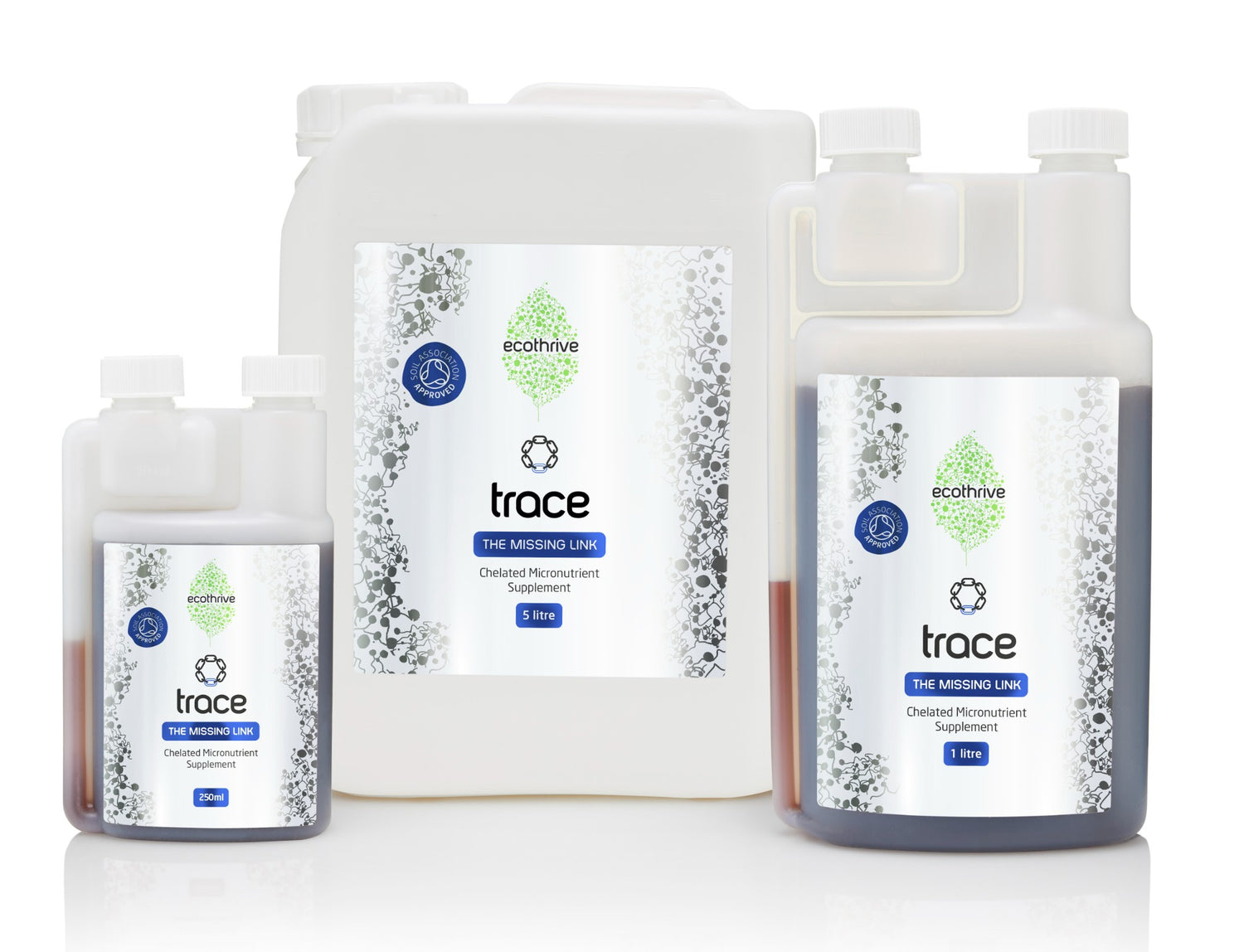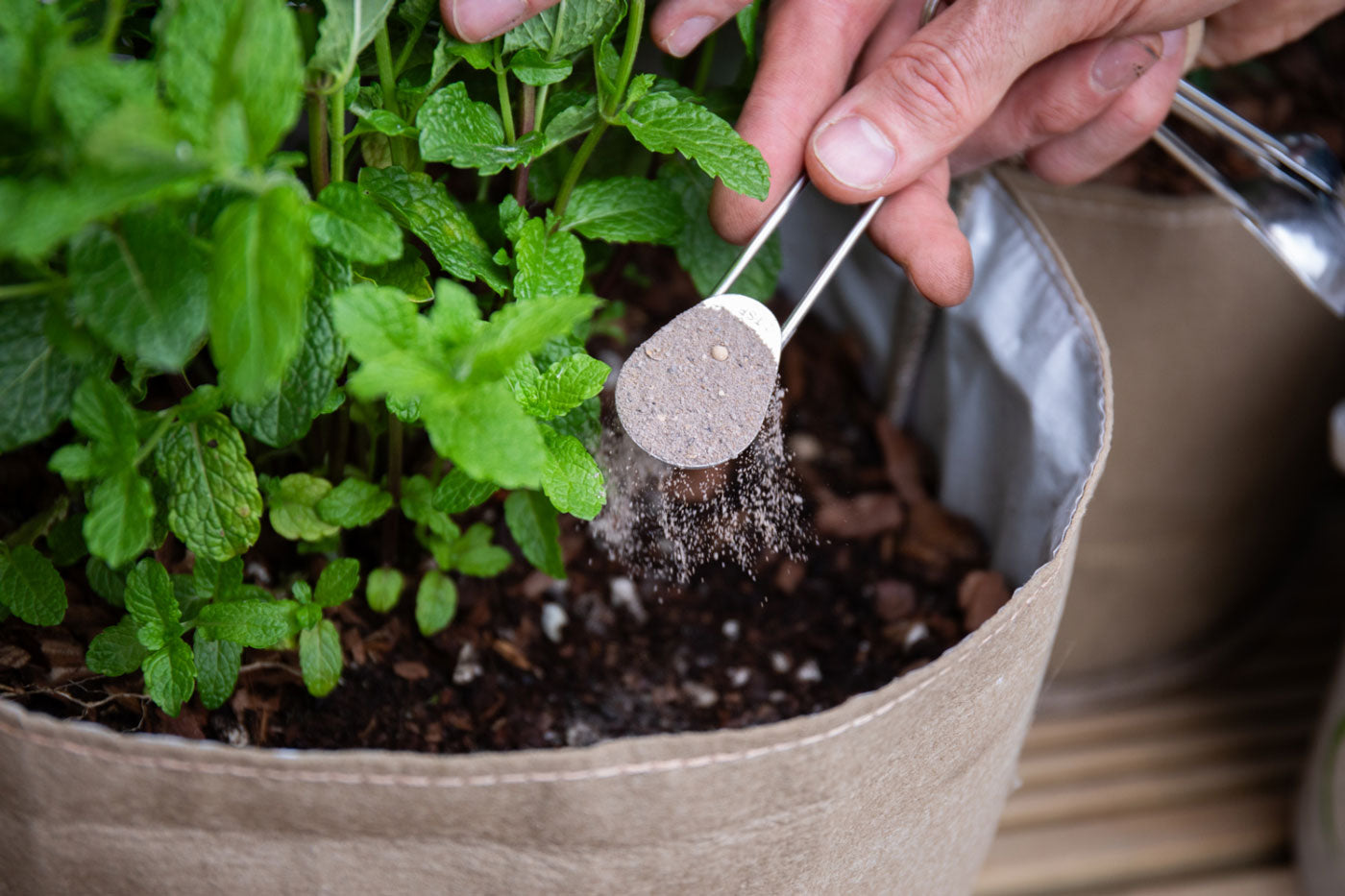When most growers think about plant fertilisers, they immediately focus on the famous trio: nitrogen, phosphorus, and potassium (NPK). While these macronutrients are undoubtedly crucial—especially for fast-growing, demanding plants—there's an unsung group of nutrients that can significantly boost your plants' health: trace elements.
Also known as micronutrients, trace elements are only required by plants in tiny amounts. But don't be fooled by their small quantities—these elements play an outsized role in plant development and actively support the uptake of those all-important macronutrients.
Why Should You Care About Trace Elements?
Trace elements are essential for synthesising many enzymes and supporting core photosynthetic processes. Without sufficient amounts of micronutrients, plants can suffer from a "hidden hunger" that's notoriously tricky to see, let alone diagnose. That's why it's smart to proactively supply trace elements to your plants, especially during critical growth stages when levels often become depleted.
When we first began testing living soil to ensure consistency across batches, we observed that trace elements, while initially present, often became depleted over time. This is a common challenge for living soil growers, as soil tests frequently show low or undetectable levels of these essential micronutrients as the growing season progresses. These elements are difficult to add in liquid form during production, and applying small volume powders evenly over a large volume of soil is equally challenging. Additionally, raw trace elements can sometimes become insoluble and unavailable to plants. To address this, we developed Ecothrive Trace, a chelated trace element supplement that can be added with watering, ensuring a consistent and adequate supply of essential micronutrients throughout the plant's life-cycle.
For soilless growers using mediums like coco coir, peat, or rockwool, the risk of micronutrient deficiencies often comes during the propagation phase. At this stage, very dilute nutrient solutions are used, and when the EC of base nutrients drops to 0.6mS or less, trace elements can become almost non-existent. Living soil growers face a different challenge—the risk of trace element depletion often peaks during mid to late flowering, precisely when you least want your plants to face nutrient deficiencies.
A well-timed supplement of trace elements can be the difference between an average harvest and a thriving one, elevating your crops from mediocre to magnificent.
Taking A Closer Look at Micronutrients
So, what exactly are these trace elements? The key players include iron, manganese, zinc, copper, boron, and molybdenum. While plants only need these in minute amounts, their roles are vital and multifaceted:- Iron: The chlorophyll champion. Plants need more iron than any other micronutrient. Without iron, plants can't produce chlorophyll, and without chlorophyll, photosynthesis grinds to a halt. Enough said on the importance of iron?
- Manganese: The enzyme activator. This mineral is crucial for various metabolic processes, keeping your plants' internal machinery running smoothly.
- Zinc: The growth hormone synthesiser. Zinc plays a significant role in producing plant growth hormones, influencing everything from stem elongation to fruit development.
- Copper: The photosynthesis supporter and cell wall strengthener. Copper aids in photosynthesis and helps form lignin, a key component of cell walls.
- Boron: The cell wall builder and sugar transporter. Boron is essential for forming cell walls and moving sugars throughout the plant.
- Molybdenum: The nitrogen metabolism helper. This mineral assists in nitrogen metabolism and enzyme activation, crucial for plants to use nitrogen effectively.
How Do Plants Uptake Essential Nutrients?
While macronutrients are needed in larger quantities, trace elements are equally critical, albeit in smaller doses. Plants absorb these nutrients through their roots, using both passive and active transport mechanisms.
Passive transport is like letting nutrients drift into the plant along a concentration gradient—no energy is required. Active transport, on the other hand, is more like the plant using a nutrient pump, expending energy to absorb minerals against the concentration gradient.
But plants aren't alone in this nutrient quest. Mycorrhizal fungi, beneficial microorganisms that form symbiotic relationships with plant roots, act like nutrient scouts. They extend the roots' reach into the soil, enhancing the uptake of nutrients, including those all-important trace elements.
Where Do Trace Elements Come From?
In organic soil-based potting mixes, trace elements can come from several sources. However, despite their touted benefits, actual availability can often be less than ideal:
- Rock Dust: The Slow-Release Mineral Bank Often added to potting mixes for its mineral content, rock dust can theoretically supply a broad spectrum of trace elements. However, it's like a savings account with a tiny interest rate—the release of these minerals is slow and often insufficient to meet your plants' immediate needs without additional help.
- Compost: Nature's Nutrient Recycler Rich in organic matter, compost contributes trace elements to the soil as microorganisms break it down. But while compost is great for overall soil health, relying on it alone for trace elements is like expecting a balanced diet from a multivitamin—it's a good start, but not quite enough, especially in intensive growing environments.
- Organic Amendments: The Multitaskers Insect frass, seaweed extracts, and other organic amendments can enrich your soil with trace elements. These products don't just provide nutrients; they're like probiotics for your soil, stimulating microbial activity and enhancing nutrient cycling and availability.
- Mineral Additives: The Targeted Boost Products specifically formulated to increase trace element content can be game-changers. These include chelated mineral supplements, which are more readily available to plants. It's like giving your plants a protein shake of easily digestible nutrients.
Key Roles and Tell-Tale Signs of Deficiency
Each trace element supports different aspects of plant health. Here's what to watch for:
- Iron (Fe): The Chlorophyll Champion Vital for chlorophyll production and enzyme function. If your plants are iron-deficient, you'll spot interveinal chlorosis—leaf tissue turns yellow (starting from the leaf petioles) while the veins stay green. This affects young leaves first, hobbling photosynthesis and leading to stunted growth and poor yield.
- Manganese (Mn): The Photosynthesis Facilitator Essential for photosynthesis and enzyme activation. Manganese-starved plants show yellowing between veins in older leaves, often with brown or black specks. This can lead to poor root development and reduced resistance to environmental stress.
- Zinc (Zn): The Growth Hormone Producer Important for growth hormone production and enzyme activity. Zinc deficiency leads to stunted growth, small, misshapen leaves, and poor fruit set. It's also crucial for protein synthesis and internode elongation, so a lack of zinc can result in short, bushy plants.
- Copper (Cu): The Cell Wall Fortifier Needed for photosynthesis and lignin formation in cell walls. Symptoms include wilting, reduced flowering, and leaf discolouration. Copper is also important for reproductive growth, so deficiency can lead to fewer flowers and fruits.
- Boron (B): The Cell Wall Builder Crucial for cell wall formation and sugar transport. Boron deficiency results in brittle stems, poor flower development, and fruit deformities. It also plays a role in calcium movement within the plant and its absence can lead to issues like hollow stems and cracked fruit.
- Molybdenum (Mo): The Nitrogen Metabolism Assistant Helps in nitrogen metabolism and enzyme activation. A shortage can cause leaf cupping, general yellowing, and reduced growth. Molybdenum is essential for the functioning of nitrate reductase, an enzyme involved in nitrogen assimilation, so its deficiency can severely impact a plant's nitrogen use efficiency.
The Microbial Connection: Trace Elements and Soil Life
Trace elements aren't just important for plants—they're integral to soil microbiology. These tiny nutrients support beneficial microbes that aid nutrient uptake, bolster disease resistance, and promote overall plant health. Let's delve into some key biological interactions:
- Nitrogen Fixation: The Atmospheric Alchemists Some bacteria perform a remarkable feat: they convert atmospheric nitrogen into a form plants can use. This process, akin to pulling fertiliser out of thin air, requires trace elements like molybdenum and iron. These bacteria form nodules on the roots of legumes, where they transform nitrogen gas into ammonia—a nitrogen source plants can readily assimilate into proteins and other essential compounds.
- Nitrification: The Nitrogen Transformers This process, the conversion of ammonium to nitrate, is facilitated by bacteria and requires copper and zinc. Nitrifying bacteria are like nature's chemists, playing a critical role in the nitrogen cycle. They ensure plants have a steady supply of nitrate, the preferred form of nitrogen for most crops.
- Enzymatic Activities: The Cellular Workhorses Many soil enzymes depend on trace elements to function properly. For instance, lignin degradation—the breaking down of tough plant material—relies on copper. Manganese is necessary for various metabolic reactions. Enzymes such as peroxidases and catalases, which protect plants from oxidative stress, also require trace elements for their activity.
- Beneficial Microbes: The Underground Allies A healthy soil ecosystem teems with beneficial microbes, such as mycorrhizal fungi, that form symbiotic relationships with plant roots. These microbes can enhance nutrient uptake, improve resistance to diseases, and help our plants thrive. Mycorrhizal fungi, in particular, are like extensions of the plant's root system. They reach out into the soil, allowing plants to access water and nutrients from a much larger area than their roots alone could cover.
Practical Tips for Growers: Putting Knowledge into Action
Now that we understand the importance of trace elements, let's look at how to apply this knowledge in your growing practices:
- Regular Soil Testing: Know Your Soil Identify deficiencies early by testing your soil regularly. Think of soil tests as a health check-up for your growing medium. They provide a detailed nutrient profile, helping you make informed decisions about fertilisation and soil management. Don't wait for your plants to show symptoms—prevention is always better than cure.
- Balanced Fertilisation: Feed Your Plants Right Use a well-rounded fertiliser regime that includes trace elements. Ecothrive's product line offers balanced solutions to ensure your plants get all they need. Products like Ecothrive Flourish, a concentrated seaweed extract, provide a rich source of micronutrients and bioactive compounds that promote plant health and resilience.
- Organic Practices: Work with Nature Incorporate organic matter into your soil to naturally boost trace element levels. Products like Ecothrive Bio-Blend are excellent for this purpose. Bio-Blend combines organic fertilisers with beneficial microbes, enhancing soil fertility and structure while promoting sustainable cultivation practices.
Try Ecothrive Trace: See the Difference
Prepare to be genuinely surprised when you start using Ecothrive Trace! This targeted supplement can make a real difference to your plants' health and productivity.
Remember, attention to trace elements isn't just about avoiding deficiencies—it's about unlocking your plants' true potential. By ensuring your plants have access to these crucial micronutrients, you're setting the stage for vibrant growth, robust health, and potentially personal-best-smashing yields!




Leave a comment
This site is protected by hCaptcha and the hCaptcha Privacy Policy and Terms of Service apply.